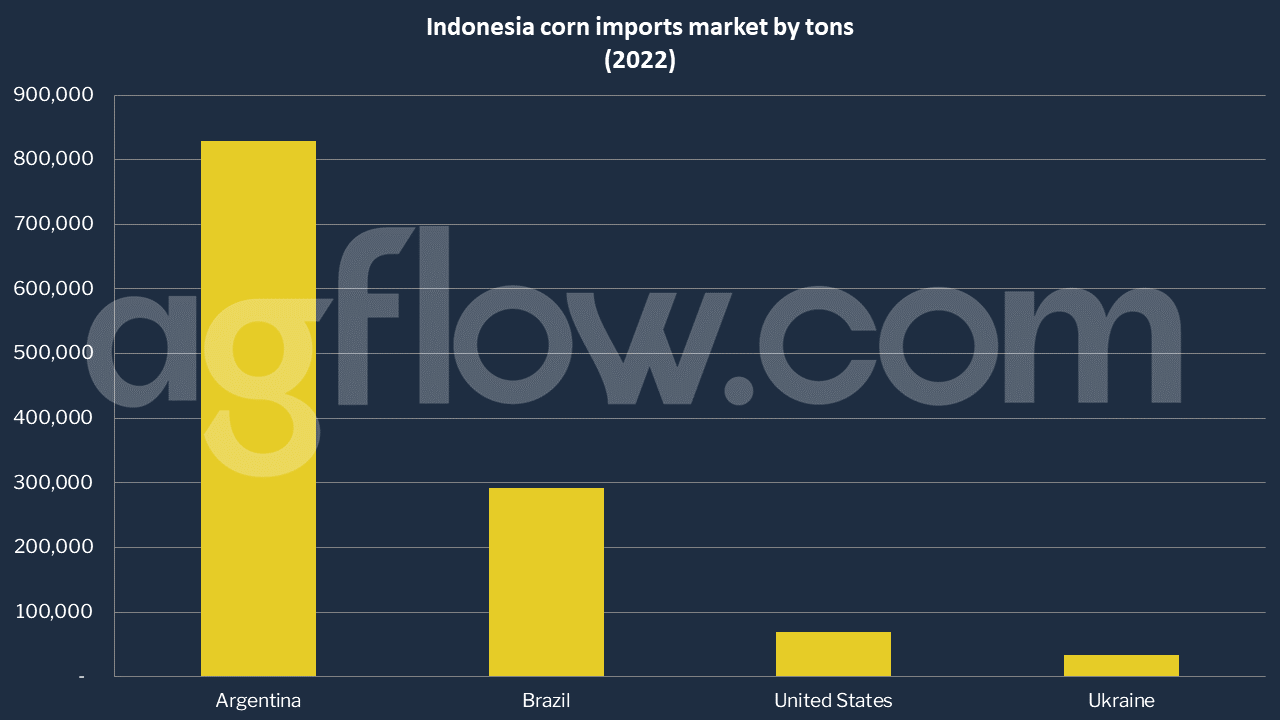Indonesia Feed Grains: Australia Taps on the IA-CEPA
Reading time: 2 minutes
Indonesia is the second largest user of commercial feed Grain in Asia after China, and consumption has proliferated. Commercial feed consumption was 11.3 mmt in 2011 and grew to 20.5 mmt in 2019. Most feed (86%) is used for poultry production, which used 17.6 mmt in 2019. Aquaculture is the following most prominent user of commercial feed (8% or 1.6 mmt), followed by beef and dairy (6% or 1.2 mmt).
Demand growth for commercial feed has been consistent at 7.1% per annum between 2011 and 2020 and is projected to continue to increase at a similar rate beyond 2020. Currently, 75 percent of Indonesian feed ingredients are produced domestically. Corn and agro-industrial by-products (e.g., onggok, a by-product of cassava processing) are the leading domestic feed sources. As domestic production of feed ingredients grows, the Indonesian industry will need to continue to improve the sophistication of its storage and processing infrastructure.
OECD-FAO (2020) forecasted that imports of feed ingredients by Indonesia – except for corn – will grow by 20 percent over the next decade (i.e., soybean meal, wheat, distillers, dried Grains with solubles (DDGS), and other Grains). According to the AgFlow data, Argentina supplied 0.8 million tons of Corn to Indonesia in 2022, followed by Brazil (0.3 million tons), the US (69,700 tons), and Ukraine (33,000 tons).
Indonesian animal producers have many local and imported ingredients available to meet their feed needs. The commercial sector utilizes the least cost ration formulations. Poultry production dominates feed Grain use and generally requires high-energy ingredients (mainly corn and wheat and cereal by-products) and protein meals (mostly soybean or meat).
Beef feedlot and dairy production uses relatively small amounts of feed Grains and mainly rely on agro-industrial by-products to supply the energy components of diets (e.g., onggok). Aquaculture uses feed-grade wheat flour (aqua flour) provided by local mills as the predominant cereal in diets, delivering digestible starch and providing binding for pellets.

Australian Ambition for Indonesian Feed Grain
According to the Australian Export Grains Innovation Center, Australian wheat, barley, sorghum, canola meal, and lupins are well suited to the nutritional requirements of Indonesian feed systems, but their fit and price competitiveness vary across the different production systems. Wheat in poultry diets shows the most significant and immediate application. In contrast, there is likely to be a small primary requirement for feed Grains in beef production, where by-products are currently being used effectively.
In addition to their value in least-cost ration analyses, Australian feed Grains have other valuable properties that complement Indonesian feed ingredients. For example, the low moisture of Australian Grain increases its nutrient concentration and lowers the risk of mycotoxin contamination. The soluble fiber from barley allows greater dry matter intake in breeding herds fed standard Indonesian diets with high fiber levels. Canola meal and lupin seed meal are both excellent sources of protein without significant levels of trypsin inhibitor present in soybean meal, making these products safe for use in aquaculture feeds.
Locally produced corn and imported soybean meal will be the mainstay of the Indonesian feed industry, but Indonesia will also need to import alternative feed ingredients to supplement local corn production. These developments in Indonesia’s growing animal industries present several new opportunities for feed Grains.
Improved storage and distribution of local corn in Indonesia present opportunities to improve the quality of feed and reduce costs to feed millers. Australian feed Grains also present opportunities for feed millers, particularly wheat, barley, sorghum, canola meal, and lupin seed. These commonly used feed ingredients can be effectively incorporated into many Indonesian feed applications, potentially reducing costs and increasing feed quality.
Australia, through the IA-CEPA, can assist Indonesia in taking advantage of these opportunities by building awareness about the potential use of alternative feed Grains and targeting investments in infrastructure and research.
Other sources: AEGIC
Try AgFlow Free
Access Free On Updates for Corn, Wheat, Soybean,
Barley, and Sunflower Oil.
No Credit Card Required & Unlimited Access In Time

